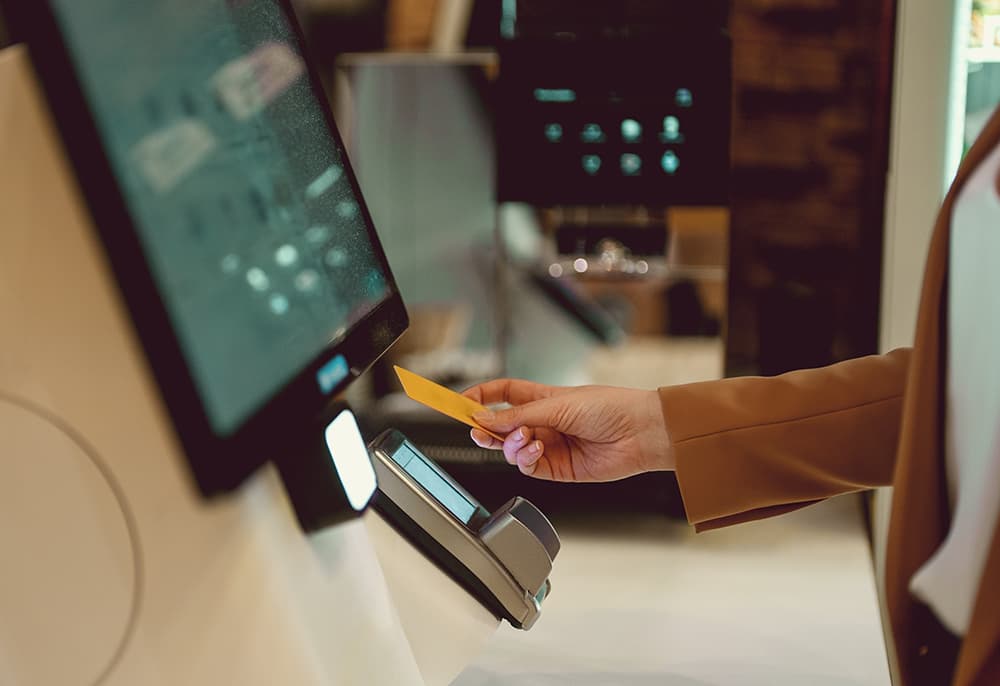What are unattended payments?
It’s a name for something we all know: The self-checkout kiosk at the grocery store, the self-serve pumps at the gas station, even that beaten-down vending machine full of year-old candy bars in the office basement.
They’re all forms of unattended payments, transactions that are fast, easy, and cashier-free.
This form of payment takes in billions each year — it’s projected to top $100 billion by 2025. They’ve been gaining steam for decades, but the isolation instincts of the COVID-19 pandemic really kicked unattended transactions into high gear. With so many customers — and their dollars — already on board, it’s a payment format that more and more payment experts are watching.
Unattended Payment Benefits: Why customers love them.
According to research conducted by Nuance, 67% of customers prefer self-service purchasing — provided it’s done right. They like the speed, convenience, and, perhaps a bit antisocially, the freedom from dealing with other people.
They also love shorter checkout lines, 24/7 access to purchases, and — thanks again, COVID — the safety of contactless payment methods.
Unattended payment benefits: Why merchants love them.
On the other side of the credit card, business owners gravitate to unattended payments for their overhead-lowering efficiency, speed, and agility — faster means more payments processed per hour. Self-serve checkouts also require less human power, so there’s a savings on wages.
So you, as an enterprising ISO, ISV, or PayFac, may be saying to yourself, “I should explore this burgeoning line of business.” Well, let’s explore.
Portrait of an unattended payment.
By definition, an unattended payment is one made at a self-service terminal or kiosk, with no cashier present (though an attendant may be nearby to help).
These transactions can be with a physical credit or debit card or made with some form of digital wallet like PayPal, Apple Pay, or Google Pay. It might be something as simple as a vending machine or as complex as a system of readers, like E-Z Pass on a toll road.
Open-loop transit systems such as this (single-tap fare for buses and trains are another form) are exploding in popularity. It’s a quick and easy way for consumers to pay for travel.
In other words, it’s a good example of fertile payment ground; frictionless for the payer, profitable for the merchant providing the service.
It’s important to note that while ecommerce payments are technically “unattended,” this category of payment applies specifically to situations where a human being — a bus driver, cashier, or ticket-taker — would do the traditional payment acceptance. In the unattended world, an automated system of some kind takes over that task.
Unattended payment opportunities: How to help businesses benefit.
As you’re advising a business owner on payment systems, you may be considering things like scalability: Can the system expand and contract with selling ups and downs?
Is it efficient and cost-effective for the type of business being run? (“Yes” for bus fares. “No” for something as clunky as car vending machines.)
So, what kinds of businesses are well-suited for unattended?
- Gas stations, as already noted, are prime places.
- Grocery / convenience stores that operate at a high volume.
- Vending services, automated machines selling candy, beverages, and suspicious sandwiches.
- Transportation/tollways tickets that remove the need for an attendant in the middle of a highway.
- EV charging stations.
Selling the benefits is also a key entry into this exploding payment space. A merchant will be swayed, obviously, by benefits to their growth potential.
- A bigger bottom line that comes from expanding capacity, reaching more customers, and increasing revenue potential. Less need for cashiers means they can increase their business hours — or go 24/7 — without adding to their staffing count. The speed angle is also a profit driver — more transactions in less time.
- Happy customers who love having options — and skipping long checkout lines. They’ll give repeat business to the business owner who gives them a fast, efficient payment experience. Less churn, increased customer loyalty.
- Operational efficiency that comes from increased capacity and lower labor costs. And there’s that “scalable” thing again: When business booms, you don’t have to train an unattended payment system or suffer through shift scheduling headaches to serve those extra customers. A self-service checkout is ready to work as soon as it’s installed.
Selling unattended payment solutions.
If you’re an ISO, ISV, or PayFac, you can start selling unattended payment solutions right now. Get a foothold in this burgeoning market by positioning yourself as an expert.
Show merchants your deep knowledge of regulatory and security factors, new technologies, processing options, and support — as well as your insight into this specialized form of payment.
We are here for you when you’re ready to attend to these kinds of payment solutions. Feel free to serve yourself.





